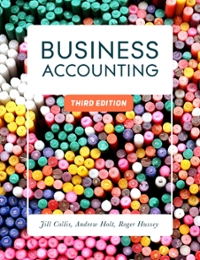Answered step by step
Verified Expert Solution
Question
1 Approved Answer
1. Jackson Corporations bonds have 12 years remaining to maturity. Interest is paid annually, the bonds have a $1,000 par value, and the coupon interest
1. Jackson Corporations bonds have 12 years remaining to maturity. Interest is paid annually, the bonds have a $1,000 par value, and the coupon interest rate is 8%. The bonds have a yield to maturity of 9%. What is the current market price of these bonds? 2. Wilson Wonderss bonds have 12 years remaining to maturity. Interest is paid annually, the bonds have a $1,000 par value, and the coupon interest rate is 10%. The bonds sell at a price of $850. What is their yield to maturity? 3. The real risk-free rate is 3%, and inflation is expected to be 3% for the next 2 years. A 2-year Treasury security yields 6.3%. What is the maturity risk premium for the 2-year security? 4. Renfro Rentals has issued bonds that have a 10% coupon rate, payable semiannually. The bonds mature in 8 years, have a face value of $1,000, and a yield to maturity of 8.5%. What is the price of bonds? 5. You just purchased a bond that matures in 5 years. The bond has a face value of $1,000 and has an 8% annual coupon. The bond has a current yield of 8.21%. What is the bonds yield to maturity? 6. If a companys beta were to double, would its expected return double? 7. The probability distribution of a less risky return is more peaked than that of a riskier return. What shape would the probability distribution have for (a) completely certain returns and (b) completely uncertain returns? 8. In the real world, is it possible to construct a portfolio of stocks that has an expected return equal to the risk-free rate? 9. Define the following terms, using graphs or equations to illustrate your answers where feasible. a. Risk in general; stand-alone risk; probability distribution and its relation to risk b. Expected rate of return. c. Continuous probability distribution d. Standard deviation, variance, coefficient of variation, CV e. Risk aversion; realized rate of return f. Risk premium for Stock i, RP; market risk premium, RPm g. Capital Asset Pricing Model (CAPM) h. Expected return on a portfolio, rp; market portfolio i. Correlation as a concept; correlation coefficient j. Market risk; diversifiable risk; relevant risk k. Beta coefficient, b; average stocks beta l. Security, Market Line (SML); SML equation m. Slope of SML and its relationship to risk aversion 10. Differentiable between the following: active income, passive income, and portfolio income. 11. Briefly, what is material participation? Why is the determination of whether a tax-payer materially participates important? 12. Mary Beth is a CPA, devoting 3,000 hours per year to her practice. She also owns an office building in which she rents out space to tenants. She devotes none of her time to the management of the office building. She has a property management firm make all management decisions for her. During 2010, she incurred a loss, for tax purposes, of $30,000 on the office building. How must Mary Beth treat this loss on her 2010 tax return? 13. Mike and Sally Card file a joint return for the 2010 tax year. Their adjusted gross income is $65,000 and they incur the following interest expenses: Qualified education loans$3,500 Personal Loan..$1,000 Home mortgage loan...$4,000 Loan used to purchase a variety of stocks, bonds, and securities$15,000 Investment income and related expenses amount to $7,000 and $500, respectively. What is Mike and Sallys interest education for the 2010 tax year? 14. In each of the following independent cases determine the amount of charitable contributions allowed the individual before consideration of any percentage limitations. a. Charlie Chubbs contributed an item of inventory from his sole proprietorship to a public charity for its use. The fair market value of the assets was $800 and his basis was $600. b. Durwood Dobson contributed some shared of common stock that he had held long-term to a private charity. The basis of the stock was $8,000 and it had a fair market value of $7,000. c. Esther Ensign contributed tangible personal property that she had held long-term to a public charity. The asset had a fair market $10,000 and a basis of $6,000. The charity intended to sell the asset and use the proceeds for charitable purposes
Step by Step Solution
There are 3 Steps involved in it
Step: 1

Get Instant Access to Expert-Tailored Solutions
See step-by-step solutions with expert insights and AI powered tools for academic success
Step: 2

Step: 3

Ace Your Homework with AI
Get the answers you need in no time with our AI-driven, step-by-step assistance
Get Started


